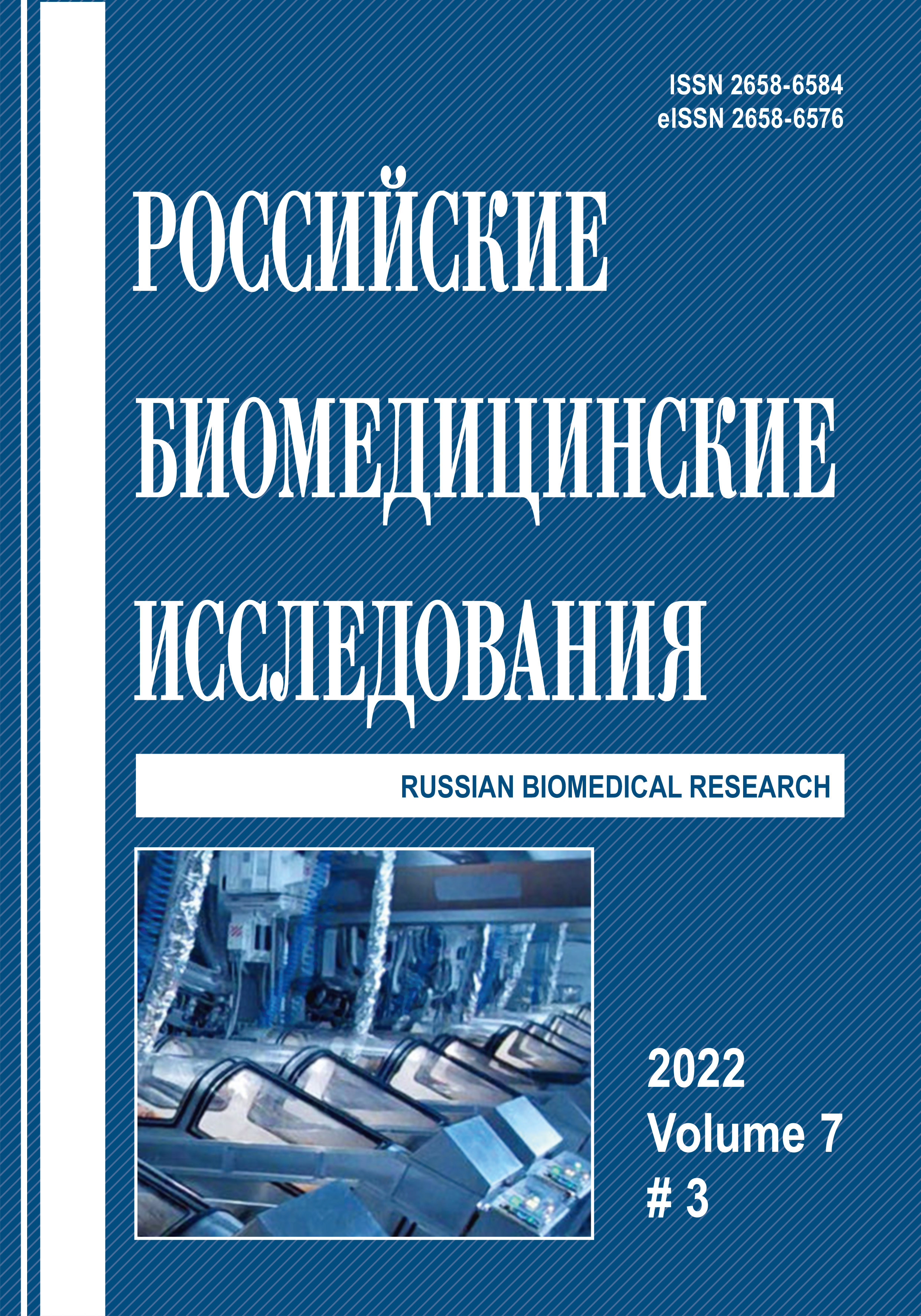EXPERIMENTAL MODELING OF RENAL CELL CARCINOMA IN MICE USING THE RENCA CELL LINE
Abstract
Renal cell carcinoma accounts for 97% of all kidney tumors in adults. Surgical resection of the primary tumor plays a leading role in the treatment of renal cell carcinoma; however, this treatment is not applicable for all patients. In many cases, drug therapy with the oral targeted drug sunitinib is indicated - the “gold standard” for the treatment of renal cell carcinoma. Sunitinib is an antitumor agent, a low -molecular inhibitor of various (more than 80) tyrosine kinases involved in the process of tumor growth, pathological angiogenesis and metastasis formation [3]. Sunitinib forms the basis of an antitumor drug produced under the trade name Sutent® (INN: Sunitinib, Pfizer Italia S.r.L (Italy)). Unfortunately, with prolonged use of this drug, resistance develops. Thus, the task of finding new, highly effective antitumor drugs and methods of their use in the therapy of renal cell carcinoma, assessing their safety and effectiveness at the stages of preclinical and clinical studies remains urgent [2, 4, 5, 7]. The aim is to develop an orthotopic model of RENCA renal cell carcinoma in mice with subsequent therapy with Sutent®. This drug is used as a “positive control” in the treatment of experimental renal cell carcinoma, which in the future will make it possible to study other antitumor drugs and approaches in the therapy of renal cell carcinoma. 60 female BALB/c mice aged 10-12 weeks were used in the study (2 experimental groups): 1 - “inoculation of tumor cells” (n=30); 2 - “inoculation of tumor cells+Sutent®” (n=30). Tumor cells of the RENCA line were used for inoculation. On the 21st and 28th days after inoculation of tumor cells, pathomorphological and histological analysis was performed. According to the results of the study, a surgical orthotopic model of RENCA renal cell carcinoma was developed. The model is characterized by 100% inoculation of the primary tumor with a median survival of 28-30 days. This model shows the effectiveness of the drug Sutent®. The scheme and dosage of the use of this drug in conjunction with the dose of tumor cells used has been worked out. Conclusions: This model can be used as an in vivo test system for preclinical evaluation of the effectiveness of new anticancer drugs being developed, as well as treatment regimens for renal cell carcinoma in complex therapy.



